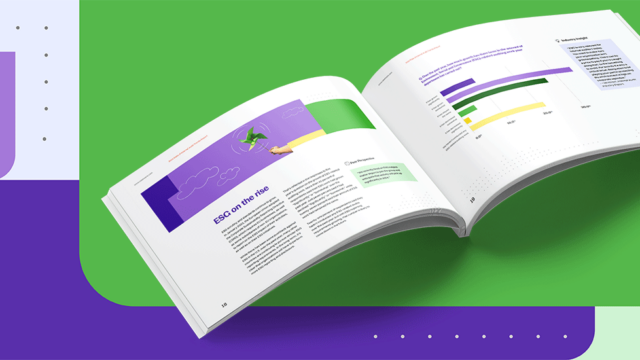
Best Practices for Internal Audit Management
Improve internal audit management while ensuring accurate results.
When you audit your organization’s internal audit management systems, procedures and operations, you want accurate and reliable results. While internal audit management can involve complex procedures and processes, it doesn’t have to be complicated or stressful.
Standards and procedures should be in place to help your organization get the most out of its internal audit. But how do you generate the results you need to make informed decisions?
These best practices can help you improve internal audit management while ensuring the accuracy and reliability of the results. Plus, you’ll learn how to simplify the process so you can save time and money.

What is internal audit management?
Internal audit management is the process of developing and executing an internal audit program. It involves assessing risks, identifying areas for improvement, managing resources and improving the effectiveness of internal control systems.
Your internal audit manager will need to assess the effectiveness of management processes and recommend corrective actions as necessary. The internal audit manager will also evaluate results, prepare an internal management system audit report, and work with auditors on taking appropriate action to address any risks or weaknesses identified.
Overall, internal audit management takes your governance processes to the next level while providing objective assurance. Without oversight and regulation, your organization will likely experience more financial and operational problems than those with a strong internal audit management program.
Best practices for managing internal audits
Properly managing the audit process can be tricky. It requires a strong understanding of the risks associated with your business, an effective plan for assessing those risks and clear communication among all stakeholders involved in the process.
By following best practices for internal audit management, you can streamline your process and guarantee precision in your results.
1. Carve out time for audit planning
It’s often said that preparation is the key to success. This is certainly true for internal audit management.
Before executing an audit, you need to have a plan in place. This includes setting clear objectives and expectations for the audit and establishing a timeline for the entire process. You should also determine who will be responsible for each task within the audit and how they will be held accountable.
Audits should also include a thorough risk assessment so you know which areas are the most critical to address. This will inform the scope of your audit projects and determine the time and resources to allocate to each stage.
2. Establish standards for your internal audit process
You’ll need clear internal audit procedures and standards to ensure accuracy, reliability and consistency. These could include guidelines for conducting interviews, performing background checks, inspecting documents and documenting evidence.
These standards help maintain the integrity of the entire audit process and provide a consistent way of measuring results. Additionally, they can help ensure all stakeholders are held accountable for their actions.
Your internal audit process should also include a system of checks and balances to verify accuracy and integrity at every stage. This could involve having a third-party auditor review the results or performing independent reviews of each stage of the process.
3. Invest in the right internal audit management software and technology
Software and technology can be great assets in the internal audit process. From automated risk management to evidence collection, plenty of tools are available to help you streamline your processes.
Investing in the right technology can also mean less manual work for your auditors. This can reduce costly errors and eliminate tasks that are time-consuming and low-value.
When selecting technology, look for tools that are easy to use, cloud-based, secure and compatible with existing systems. Additionally, ensure you understand the vendor’s support policy in case of any technical issues or concerns.
4. Follow up on audit remediation actions
No matter how well your internal audit process is managed, it won’t be successful unless you follow up on any identified corrective measures. Once an issue has been identified, it’s essential to monitor the progress of any action items and see them completed promptly.
This can involve the creation of audit reports to track progress, scheduling follow-up meetings with stakeholders and documenting the results of any corrective measures taken. Doing so will help you ensure any identified issues are adequately addressed and provide assurance that risk levels have been reduced.
5. Don’t forget about compliance
Internal auditing must be carried out according to applicable regulations and industry standards. This includes having all audit documents updated regularly and documenting any changes to the process or policies. External audits may also be required for certain organizations.
It’s also important to stay informed about new laws, regulations and guidelines that may affect your internal audit process. Doing so will help you maintain a compliant system and ensure that your audits meet the highest standards.
By following these best practices for internal audit management, you can be certain that your audits are efficient, effective and compliant. This can help reduce risk levels and ensure all stakeholders are held to the highest performance standards. When you establish clear standards and invest in the right tools, you can ensure that your internal audit process is successful.
Increase your team’s efficiency with our audit management solution
Audit management is an essential part of any internal audit process. With the right resources, your audits will be efficient, effective and accurate.
Caseware’s audit management solution provides tools to streamline your processes and improve compliance. It helps automate tedious tasks like timesheet creation and client relationship management, giving your internal audit team more time to focus on growing your business.
Plus, with integrated risk assessment tools, you’ll always be a step ahead of any potential issues. When you get in front of risks, you’ll be able to reduce costs, increase profitability and protect your organization from potential liabilities.
With thematic reports and real-time insight into how your business performs, you’ll be able to make informed decisions and take measurable actions to improve outcomes. Engagement information, such as staff profitability, deliverables and budget utilization, can be accessed anytime so you can take action when it matters. Learn more today.








